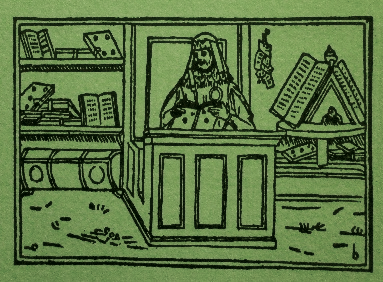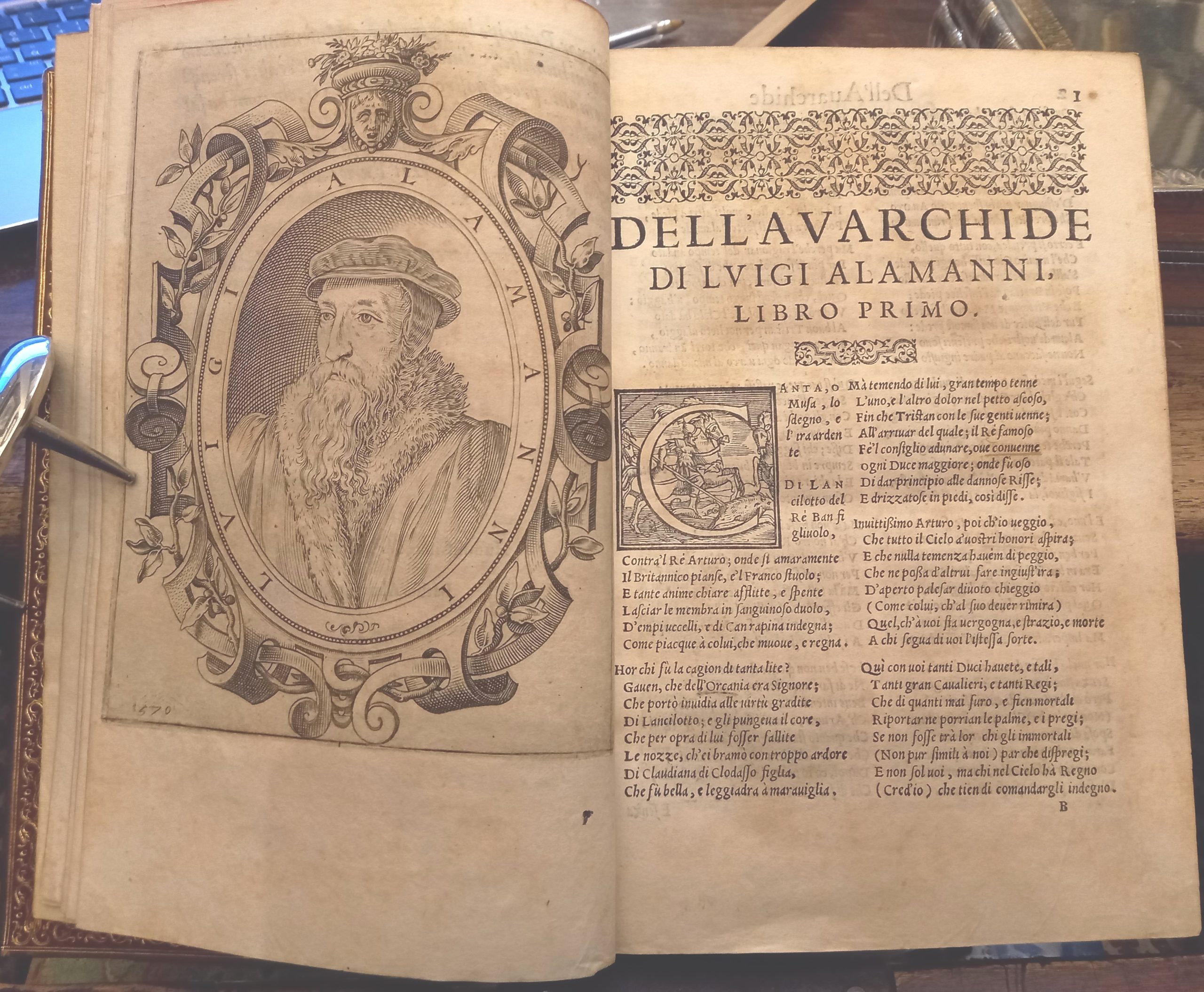In-4 (22,5 cm) (8) 325 (3). Al frontespizio marca editoriale in cornice figurata: Giglio fiorentino sorretto da due putti alati. In basso iniziale F. Al colophon, dentro ovale, un giglio fiorentino con due putti alla base poggia su un basamento; in basso iniziale F e motto: Nil candidius. Ritratto calcografico dell’autore datato. Iniziali e fregi xilografati. Elegante legatura in piena pelle con riquadri dorati, caratteri e gigli dorati al dorso. Riquadro con fregi dorati lungo tutta l’unghia dei piatti e contropiatti rivestiti di carta marmorizzata. Dedica al prof. Giovanni Getto a cui questo esemplare fu regalato perchè in precedenza posseduto dal sig. Razzolini Luigi. Prima edizione postuma a cura di Battista Alamanni, il cui nome figura nella prefazione. Alamanni (1495-1556) è stato considerato per alcuni secoli uno dei maggiori poeti italiani, come prova il numero delle edizioni, che si avvicina a quello dei massimi esponenti della poesia italiana. Tuttavia le storie della letteratura del ventesimo e del ventunesimo secolo non gli assegnano il ruolo che mostrarono di riconoscergli, con il numero delle ristampe, gli editori italiani tra il Seicento e l’Ottocento.L’autore scrisse questo poema in ottave ad imitazione dell’Iliade e tratta di una guerra immaginaria che nel 500 d.C. Celti, cristiani e germani pagani combatterono intorno ad Avaricum. Melzi-Tosi p. 9; Olschki-Choix 18.282; BMC STC p. 12. 1570. Luigi Razzolini fu un erudito e bibliografo (n. Greve in Chianti 1819 – m. ivi 1881, sacerdote; autore della Bibliografia dei testi di lingua a stampa citati dagli Accademici della Crusca. Giovanni Getto (Ivrea, 14 giugno 1913 – Bruino, 9 giugno 2002) è stato un critico letterario e accademico italiano.In-4 (22.5 cm) (8) 325 (3). On the title page an editorial brand in a figured frame: Florentine lily supported by two winged cherubs. Below initial F. In the colophon, inside an oval, a Florentine lily with two cherubs at the base rests on a base; below initial F and motto: Nil candidius. Chalcographic portrait of the author dated. Woodcut initials and friezes. Elegant full leather binding with gilded squares, gilded letters and lilies on the back. Frame with gilded friezes along the entire nail plate and counterplates covered with marbled paper. Dedication to prof. Giovanni Getto to whom this specimen was given as a gift because it was previously owned by Mr. Razzolini Luigi. First posthumous edition edited by Battista Alamanni, whose name appears in the preface. Alamanni (1495-1556) was considered for some centuries one of the greatest Italian poets, as evidenced by the number of editions, which is close to that of the greatest exponents of Italian poetry. However, the literary histories of the twentieth and twenty-first centuries do not assign him the role that Italian publishers between the seventeenth and nineteenth centuries showed him to be recognized by the number of reprints. Iliad and deals with an imaginary war that in 500 A.D. Celts, Christians and pagan Germans fought around Avaricum. Melzi-Tosi p. 9; Olschki-Choix 18,282; BMC STC p. 12. 1570. Luigi Razzolini was a scholar and bibliographer (b. Greve in Chianti 1819 – d. There 1881, priest; author of the Bibliography of the printed language texts cited by the Academicians of the Crusca. Giovanni Getto (Ivrea, June 14, 1913 – Bruino, June 9, 2002) was an Italian literary and academic critic.
Libreria Emiliana
Antiquaria
Libri e Stampe Veneziane
dal XV al XXI Secolo
dal XV al XXI Secolo


